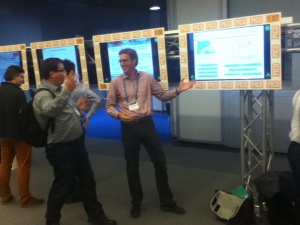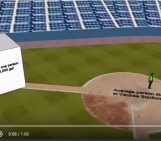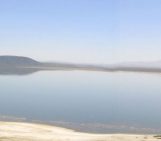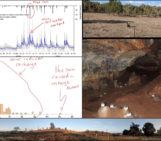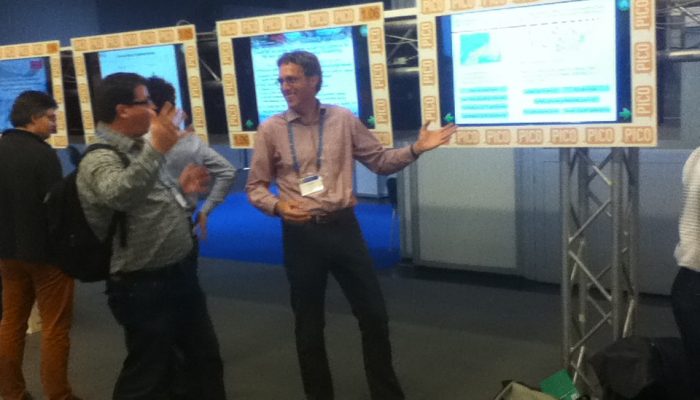
A few weeks ago at the European Geosciences Union in Vienna I learned about two dead-easy and great science communication tools for conferences. These are great for any conference hall or meeting, but could be just as easily be used in the classroom to make a more exciting in class research presentations. For better or worse, most of us are carrying them (or looking at them!) right now: a smart screen or cell phone.
The EGU conference uses smart screens in their innovative PICO (Presenting Interactive COntent) sessions. Every PICO author first presents orally in a 2-minute science blitz and then has a smart screen pre-loaded with a dynamic presentation to discuss further with colleagues. Simple and effective.
While I was a traditional poster session, Hannes Müller Schmied of Frankfurt University pulled out his cell phone to show me some additional visualizations (in this case global hydrologic model results posted on their website – this was connected to his poster with a QR code!). It was great to for him to be able to walk me through the results right there rather than be limited by the static images on his poster. We immediately realized this should be called micro-PICO!

Hannes Müller Schmied showing off model results in this micro-PICO session with his poster in the background.
Thanks EGU for teaching me about two super simple and effective science communication tools, which I hope will cross the pond to AGU and other meetings.

